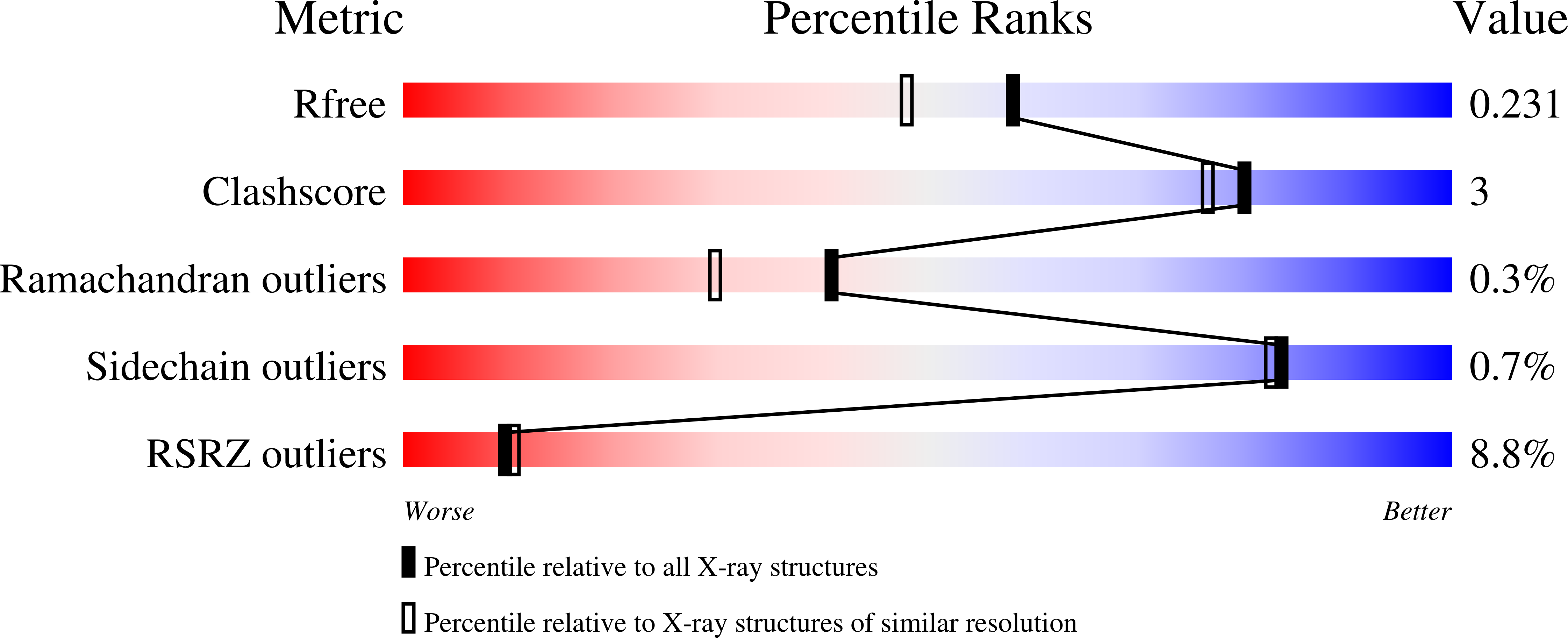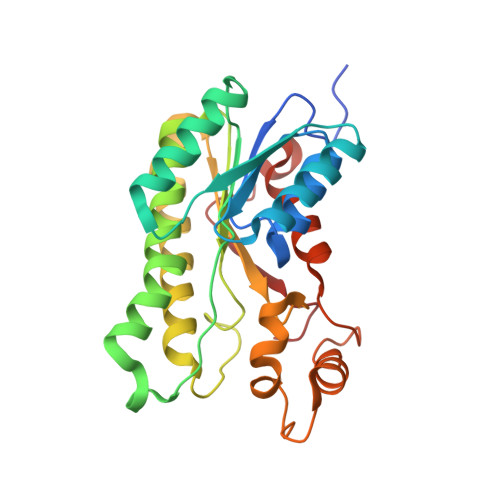Structural Studies on a Fungal 17Beta-Hydroxysteroid Dehydrogenase
Cassetta, A., Krastanova, I., Kristan, K., Brunskole Svegelj, M., Lamba, D., Lanisnik Rizner, T., Stojan, J.(2012) Biochem J 441: 151-160
- PubMed: 21929506
- DOI: https://doi.org/10.1042/BJ20110567
- Primary Citation of Related Structures:
3QWF, 3QWI - PubMed Abstract:
The 17¦Â-HSD (17¦Â-hydroxysteroid dehydrogenase) from the filamentous fungus Cochliobolus lunatus (17¦Â-HSDcl) is a NADP(H)-dependent enzyme that preferentially catalyses the interconversion of inactive 17-oxo-steroids and their active 17¦Â-hydroxy counterparts. 17¦Â-HSDcl belongs to the SDR (short-chain dehydrogenase/reductase) superfamily. It is currently the only fungal 17¦Â-HSD member that has been described and represents one of the model enzymes of the cP1 classical subfamily of NADPH-dependent SDR enzymes. A thorough crystallographic analysis has been performed to better understand the structural aspects of this subfamily and provide insights into the evolution of the HSD enzymes. The crystal structures of the 17¦Â-HSDcl apo, holo and coumestrol-inhibited ternary complex, and the active-site Y167F mutant reveal subtle conformational differences in the substrate-binding loop that probably modulate the catalytic activity of 17¦Â-HSDcl. Coumestrol, a plant-derived non-steroidal compound with oestrogenic activity, inhibits 17¦Â-HSDcl [IC50 2.8?¦ÌM; at 100?¦ÌM substrate (4-oestrene-3,17-dione)] by occupying the putative steroid-binding site. In addition to an extensive hydrogen-bonding network, coumestrol binding is stabilized further by ¦Ð-¦Ð stacking interactions with Tyr212. A stopped-flow kinetic experiment clearly showed the coenzyme dissociation as the slowest step of the reaction and, in addition to the low steroid solubility, it prevents the accumulation of enzyme-coenzyme-steroid ternary complexes.
Organizational Affiliation:
Istituto di Cristallografia - UOS Trieste, Consiglio Nazionale delle Ricerche, Area Science Park-Basovizza, S.S. 14 km 163.5, I-34149 Trieste, Italy. alberto.cassetta@ic.cnr.it


















